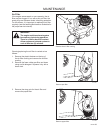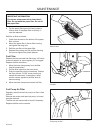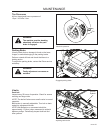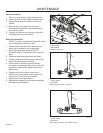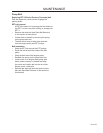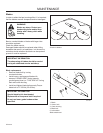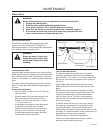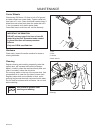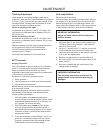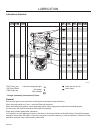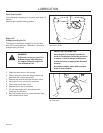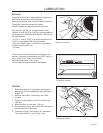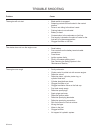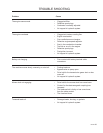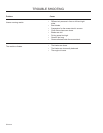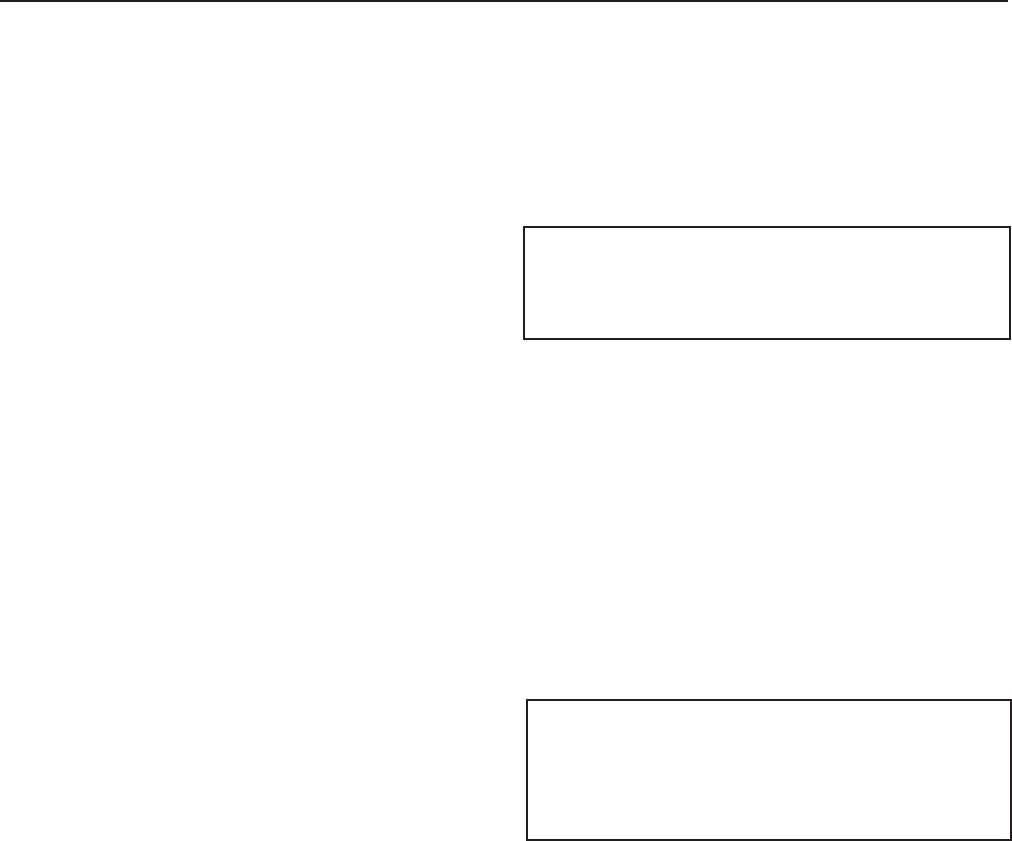
DIXON-47
MAINTENANCE
Anti-scalp Rollers
Deck has anti-scalp rollers.
Anti-scalp rollers are properly adjusted when they are
just slightly off of the ground when the deck is at the
desired cutting height in the operating position. Anti-
scalp rollers then keep the deck in the proper position
to help prevent scalping in most terrain conditions.
IMPORTANT INFORMATION
Adjust anti-scalp rollers with the mower on a
at level surface.
IMPORTANT INFORMATION
The anti-scalp rollers must not be used for
gauge wheels or the roller and deck may be
damaged.
Adjust the deck to the desired cutting height (see 1.
“To Adjust Deck Cutting Height” in the operation
section of this manual).
Using a ¾" wrench and a 2.
9
/16" wrench, remove the
nut and shoulder bolt from the anti-scalp roller.
Lower the anti-scalp roller to the ground, and raise 3.
it up to the next highest hole.
Replace and tighten the nut and shoulder bolt.4.
Be sure to adjust all of the anti-scalp rollers to the 5.
same position.
Be sure to readjust the anti-scalp rollers if the 6.
cutting height is changed.
Tracking Adjustment
If the mower is not tracking straight, check the air
pressure in both rear tires. Recommended air pressure
is 15 psi (1 bar). If the unit will not track straight, follow
the steps below. Tracking must be checked on a at
and level concrete or blacktop surface.
Mower is tracking to the right.
Increase the air pressure 2-3 psi (0.1-0.2 bar) in the
right rear tire or decrease the air pressure 2/3 psi in
the left rear tire.
Mower is tracking to the left.
Increase the air pressure 2-3 psi (0.1-0.2 bar) in the
left rear tire or decrease the air pressure 2/3 psi in the
right rear tire.
Recheck tracking and keep making adjustments with
the tire pressure until the unit tracks straight.
DO NOT exceed maximum recommended tire
pressure 24 psi (1.6 bar).
Record the tire pressure for future reference.
EZT Transaxle
Purging Procedure
Due to the effects air has on efciency in hydrostatic
drives, it is critical that it is purged from the system.
Purge procedures should be done any time a
hydrostatic system has been opened for maintenance
or for adding oil to the system.
Symptoms in hydrostatic systems may be:
Noisy operation.1.
Lack of power or drive after short term operation.2.
High operation temperature.3.
Before starting, make sure the transaxle/transmission
is at the proper oil level.
Procedures should be performed with the machine
drive wheels off the ground, then repeated under
normal operating conditions.
With the bypass valve 1. open and the engine
running, slowly move the directional control in both
forward and.reverse directions (5 or 6 times). As
air is purged, the oil level will drop.
With the bypass valve 2. closed and the engine
running, slowly move the directional control in
both forward and reverse directions (5 to 6 times).
Check the oil level, and add oil as required after
stopping the engine.
It may be necessary to repeat Steps 1 and 2 until 3.
all the air is completely purged from the system.
Purging is complete when the transaxle moves
forward and in reverse at normal speed.



